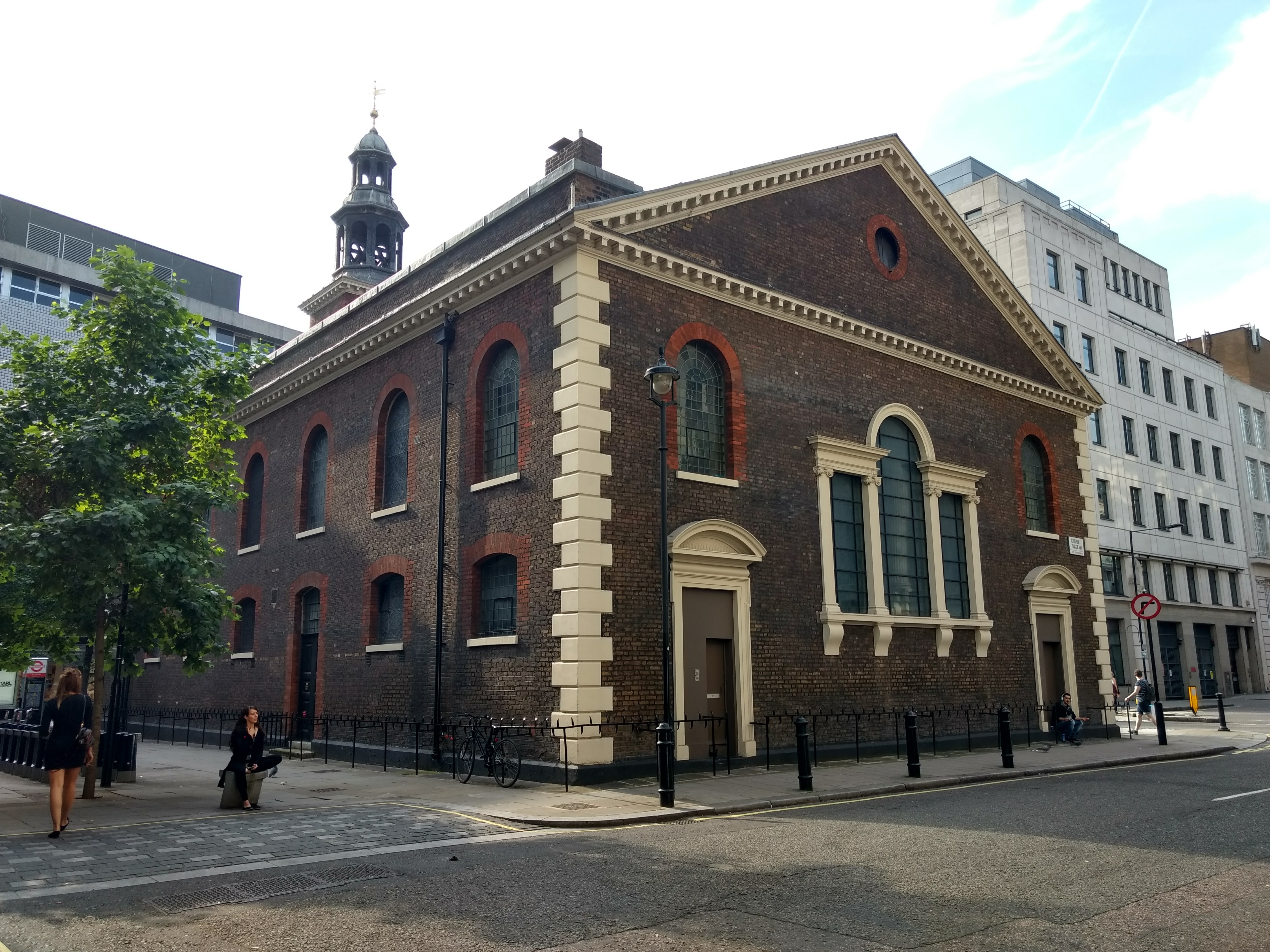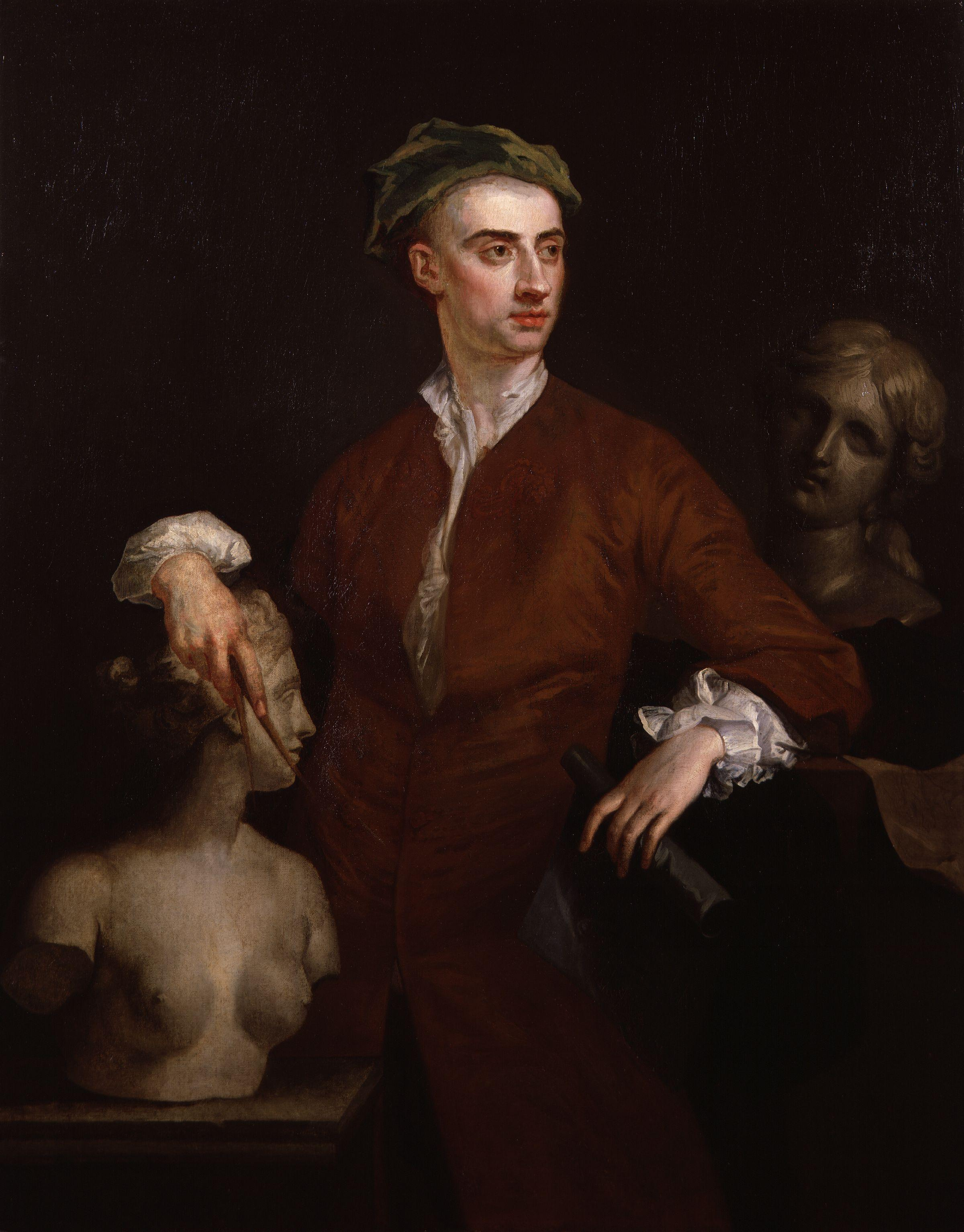|
Vere Street, Marylebone
Vere Street is a street off Oxford Street, in central London. It is a continuation of Welbeck Street, and part of the B406. It is named after a family name of the area's owners at the time of its construction, the Earls of Oxford. It is best known for the Marybone Chapel, also known as the Marylebone Chapel or Oxford Chapel, now St Peter's Vere Street. The sculptor John Michael Rysbrack lived and died here in 1770. The Consular Section of the Embassy of Brazil is located at nos. 3–4. The nearest underground station is Bond Street to the south-west. See also * List of eponymous roads in London The following is a partial list of eponymous roads in London – that is, roads named after people – with notes on the link between the road and the person. Examples of reigning monarchs, Prime Ministers etc. with no inherent geographic link a ... References * External links LondonTown.com information Streets in the City of Westminster {{London-road-stub ... [...More Info...] [...Related Items...] OR: [Wikipedia] [Google] [Baidu] |
Oxford Street
Oxford Street is a major road in the City of Westminster in the West End of London, running from Tottenham Court Road to Marble Arch via Oxford Circus. It is Europe's busiest shopping street, with around half a million daily visitors, and as of 2012 had approximately 300 shops. It is designated as part of the A40, a major road between London and Fishguard, though it is not signed as such, and traffic is regularly restricted to buses and taxis. The road was originally part of the Via Trinobantina, a Roman road between Essex and Hampshire via London. It was known as Tyburn Road through the Middle Ages when it was notorious for public hangings of prisoners at Tyburn Gallows. It became known as Oxford Road and then Oxford Street in the 18th century, and began to change from residential to commercial and retail use by the late 19th century, attracting street traders, confidence tricksters and prostitution. The first department stores in the UK opened in the early 20th century, ... [...More Info...] [...Related Items...] OR: [Wikipedia] [Google] [Baidu] |
Welbeck Street
Welbeck Street is a street in the West End, central London. It has historically been associated with the medical profession. Location The street runs approximately north–south between New Cavendish Street at the northern end, crossing Wigmore Street near Wigmore Hall just to the east, becoming Vere Street continuing southwards. The nearest tube station is Bond Street to the south. The part south of Wigmore Street is part of the B406. The London Welbeck Hospital, is located at 27 Welbeck Street, and the Welbeck Street Hospital for Diseases of the Nervous System was located on this street as well; the offices of the British Institute of Radiology were formerly located there. The Welbeck Clinic is located at No. 20. There is a Russian Orthodox Chapel at 32 Welbeck Street that dates back as far as the early 19th century when the building was the residence of the Russian Embassy Chaplain. The chapel was rebuilt in 1864 and features a particularly fine iconostasis. The chapel ... [...More Info...] [...Related Items...] OR: [Wikipedia] [Google] [Baidu] |
Earl Of Oxford
Earl of Oxford is a dormant title in the Peerage of England, first created for Aubrey de Vere by the Empress Matilda in 1141. His family was to hold the title for more than five and a half centuries, until the death of the 20th Earl in 1703. The de Veres were also hereditary holders of the office of Master Chamberlain of England from 1133 until the death of the 18th Earl in 1625. Their primary seat was Hedingham Castle in Essex, but they held lands in southern England and the Midlands, particularly in eastern England. The actual earldom was called 'Oxenford' until at least the end of the 17th century. Medieval sources thus refer to 'my lord of Oxenford' when speaking of the earl. Earls of Oxford (1141) Soon after his father's death in 1141, Aubrey III de Vere was recruited by Empress Matilda. Aubrey's brother-in-law, Geoffrey de Mandeville first earl of Essex, apparently negotiated the offer of the earldom of Cambridge, with a secondary offer of one of four counties if Camb ... [...More Info...] [...Related Items...] OR: [Wikipedia] [Google] [Baidu] |
Marybone Chapel
St Peter, Vere Street, known until 1832 as the Oxford Chapel after its founder Edward Harley, 2nd Earl of Oxford and Earl Mortimer, is a former Anglican church off Oxford Street, London. It has sometimes been referred to as the Marybone Chapel or Marylebone Chapel. History The chapel was designed by James Gibbs in 1722. It was originally intended as a Chapel of Ease to supplement the parish church for the growing parish of Marylebone. It was licensed for marriages from 1722 to 1754 and between 1930 and its deconsecration: Margaret Bentinck (daughter of the 2nd Earl, and Duchess of Portland) married here. Incumbents included the theologian Frederick Maurice (1860–69), and William Boyce was the chapel's organist from 1734 to 1736. Its interior appears in plate 2 of Hogarth's print series ''Industry and Idleness''. It was also here that the famous London French Master Chef Jassintour Rozea married his French wife Mary Magdalen Bernard in April 1744. They lived on Duke Str ... [...More Info...] [...Related Items...] OR: [Wikipedia] [Google] [Baidu] |
John Michael Rysbrack
Johannes Michel or John Michael Rysbrack, original name Jan Michiel Rijsbrack, often referred to simply as Michael Rysbrack (24 June 1694 – 8 January 1770), was an 18th-century Flemish sculptor, who spent most of his career in England where he was one of the foremost sculptors of monuments, architectural decorations and portraits in the first half of the 18th century. His style combined the Flemish Baroque with Classical influences. He operated an important workshop whose output left an important imprint on the practice of sculpture in England.Robert Williams and Katharine Eustace, ''Rysbrack family [Rysbraeck ' at Grove Art Online Accessed 25 March 2021 Family background and early life Rysbrack was born on 24 June 1694 in |
Embassy Of Brazil, London
The Embassy of Brazil in London is the diplomatic mission of Brazil in the United Kingdom. The Brazilian ambassador's residence is located in a separate building at 54 Mount Street, Mayfair, as is the Consular section which is at 3-4 Vere Street, Marylebone. Brazil also maintain an Office of the Naval Adviser at 170 Upper Richmond Road, Putney and an Office of the Air Adviser/Brazil Aeronautical Commission In Europe at 16 Great James Street, Bloomsbury. The Embassy moved to its current location in Cockspur Street in 2011, from Green Street, Mayfair. Gallery File:Embassy_of_Brazil_in_London_2.jpg, Plaque outside the embassy File:Residence_of_Brazilian_ambassador,_London.jpg, The Ambassador's residence at 54 Mount Street File:Consulate_of_Brazil,_London.jpg, The Consulate on Vere Street File:Former embassy of Brazil, London.jpg, The former embassy in Green Street File:Brazil_Air_officer_building_London.jpg, The Brazil Aeronautical Commission In Europe on St James Street Re ... [...More Info...] [...Related Items...] OR: [Wikipedia] [Google] [Baidu] |
Vere Street Westminster Road Sign
Vere may refer to: Given name * Vere Fane, 4th Earl of Westmorland grandson to Horace Vere, 1st Baron Vere of Tilbury * Vere Fane, 5th Earl of Westmorland * Vere Fane, 14th Earl of Westmorland * Vere Monckton-Arundell, Viscountess Galway * Vere Fane (MP) Tory MP for Petersfield and Lyme Regis * Vere Fane Benett-Stanford Conservative MP Shaftesbury * Sir Vere Bonamy Fane General in the British Indian Army buried at Fulbeck * William Vere Reeve King-Fane of Fulbeck (1868–1943) OBE was a member of the Fane family, an English landowner, soldier and High Sheriff of Lincolnshire buried at Fulbeck * Arthur Vere Harvey, Baron Harvey of Prestbury (1906-1994), British Conservative politician * Henry Vere Huntley (1795-1864), English naval officer and colonial administrator * Vere Beauclerk, 1st Baron Vere (1699-1781), British peer and politician * Vere Bird (1910-1999), first Prime Minister of Antigua and Barbuda * Vere Gordon Childe (1892-1957), Australian archaeologist and philologi ... [...More Info...] [...Related Items...] OR: [Wikipedia] [Google] [Baidu] |
Vere Street Westminster
Vere may refer to: Given name * Vere Fane, 4th Earl of Westmorland grandson to Horace Vere, 1st Baron Vere of Tilbury * Vere Fane, 5th Earl of Westmorland * Vere Fane, 14th Earl of Westmorland * Vere Monckton-Arundell, Viscountess Galway * Vere Fane (MP) Tory MP for Petersfield and Lyme Regis * Vere Fane Benett-Stanford Conservative MP Shaftesbury * Sir Vere Bonamy Fane General in the British Indian Army buried at Fulbeck * William Vere Reeve King-Fane of Fulbeck (1868–1943) OBE was a member of the Fane family, an English landowner, soldier and High Sheriff of Lincolnshire buried at Fulbeck * Arthur Vere Harvey, Baron Harvey of Prestbury (1906-1994), British Conservative politician * Henry Vere Huntley (1795-1864), English naval officer and colonial administrator * Vere Beauclerk, 1st Baron Vere (1699-1781), British peer and politician * Vere Bird (1910-1999), first Prime Minister of Antigua and Barbuda * Vere Gordon Childe (1892-1957), Australian archaeologist and philologi ... [...More Info...] [...Related Items...] OR: [Wikipedia] [Google] [Baidu] |
Bond Street Tube Station
Bond Street is a London Underground and Elizabeth line station in Mayfair, in the West End of London. Entrances are on Oxford Street, near its junction with New Bond Street, and on Hanover Square. The station is on the Central line, between and stations, the Jubilee line, between and , and the Elizabeth line between and . It is in Travelcard Zone 1. History The station was first opened on 24 September 1900 by the Central London Railway, three months after the first stations on the Central line opened. The surface building was designed, in common with all original CLR stations, by the architect Harry Bell Measures. The original plans for the railway named the station as Davies Street rather than Bond Street. In 1920 a possible joint venture was considered by London Underground and the nearby Selfridges store. This would have involved rebuilding the station, to include an entrance in Selfridge's basement. The idea was revisited in the early 1930s, leading to a concept of ... [...More Info...] [...Related Items...] OR: [Wikipedia] [Google] [Baidu] |
List Of Eponymous Roads In London
The following is a partial list of eponymous roads in London – that is, roads named after people – with notes on the link between the road and the person. Examples of reigning monarchs, Prime Ministers etc. with no inherent geographic link are omitted or kept to one example as there are many streets named "Victoria + descriptor" and "Wellington + descriptor" for example. Roads and streets Squares See also * List of eponymous streets in Metro Manila * List of eponymous streets in New York City References Further reading *''The Streets of Richmond and Kew'', Richmond Local History Society, 2019. External links Historic streets of London: an alphabetical handbook(1923) from the Internet Archive {{DEFAULTSORT:List Of Eponymous Roads In London Roads in London A road is a linear way for the conveyance of traffic that mostly has an improved surface for use by vehicles (motorized and non-motorized) and pedestrians. Unlike streets, the main function of roads is transpo ... [...More Info...] [...Related Items...] OR: [Wikipedia] [Google] [Baidu] |



